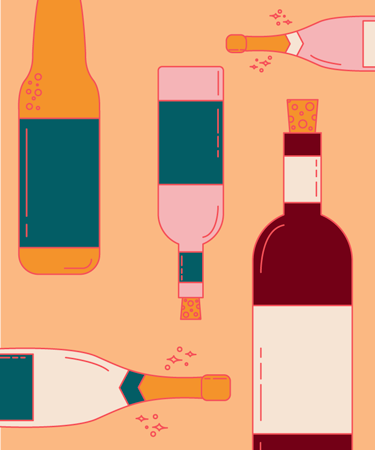“I just got back from (pick a country) where we had this fabulous wine. I asked for it at my favorite wine shop, but they said it wasn’t available here. What’s up with that?”
We hear ya! The problem is, the U.S. is the largest wine market in the world, but also the most difficult for brands to break into.
That’s because after Prohibition, the Federal Government put in place a structure to control and regulate wines and spirits to make sure guys like Al Capone stay out of the business.
So in 1933 the 21st Amendment passed— “Repeal”—and gave the right to regulate how wine, beer and spirits are sold to the individual states under a structure now known as the “Three Tier System.” It works like this: Suppliers/importers sell to distributors, who in turn sell to package stores and bars and restaurants, and ultimately, to you the consumer. By keeping the three tiers separate, the plan was to prevent any one tier or company from monopolizing the business.
Fast-forward 83 years.
Every state has its own set of laws, and throw in D.C. and Montgomery County, MD, which function as independently regulated entities, and we now have 52 different sets of rules.
Of the 50 states, 35 are what are called “Open,” and 17 are known as “Control.” Control means that the state is directly involved in the business either as a distributor (Oregon) and/or a retailer (Pennsylvania). And to confuse the issue further, some states are only “Control” for spirits, but not wine and beer.
So yeah, they kept the gangsters out of the business; but the reality is that it’s also caused humongous barriers to entry for imported brands.
Consolidation has run rampant in the biz so that now there are a small number of major international suppliers (think LVMH, Pernod Ricard, Bacardi, Constellation) that are focused on their big brands. Running in lockstep with them, there has been similar consolidation at the distributor level. Because of the three-tier system, distributors may have operations in multiple states, but they all run as independent companies by state. The net result is that the little guys get lost in the shuffle, like in musical chairs.
So any new brand trying to break into the U.S. market has to find a distributor in every state that it wants to do business in — and one or more importers to manage it all, often different ones in different states.
And that’s the crux of the problem for that little Sangiovese you tasted in Siena. Its producers simply don’t have the resources to navigate the complexities of the American market.
And that’s why some friends of ours created an innovative trade event called the USA Trade Tasting…to help pry open the barrier to entry just a teensy bit, and find creative but legal ways for small brands to get into the U.S. and still play by the Three Tier System rules.
The wine/beer/spirits/cider trade will be gathering in NY next week on March 21-23 to attend the USA Trade Tasting. They’re all focused on one thing: what’s new, and how we can get it here in America. The benefit to you is that you can play a role in helping new brands break in. But heads up, this gig is TRADE ONLY. If you’re in the business you can register for the event here.
If you’re not in the biz, and are instead just someone who loves new wine, beer and spirits, then you can tell the people who run your favorite wine shop or liquor store that they ought to register to attend this event and check out what’s new, hip and happening. With any luck, you just might find that Sangiovese you fell in love with in Siena at a shop near you next year.

